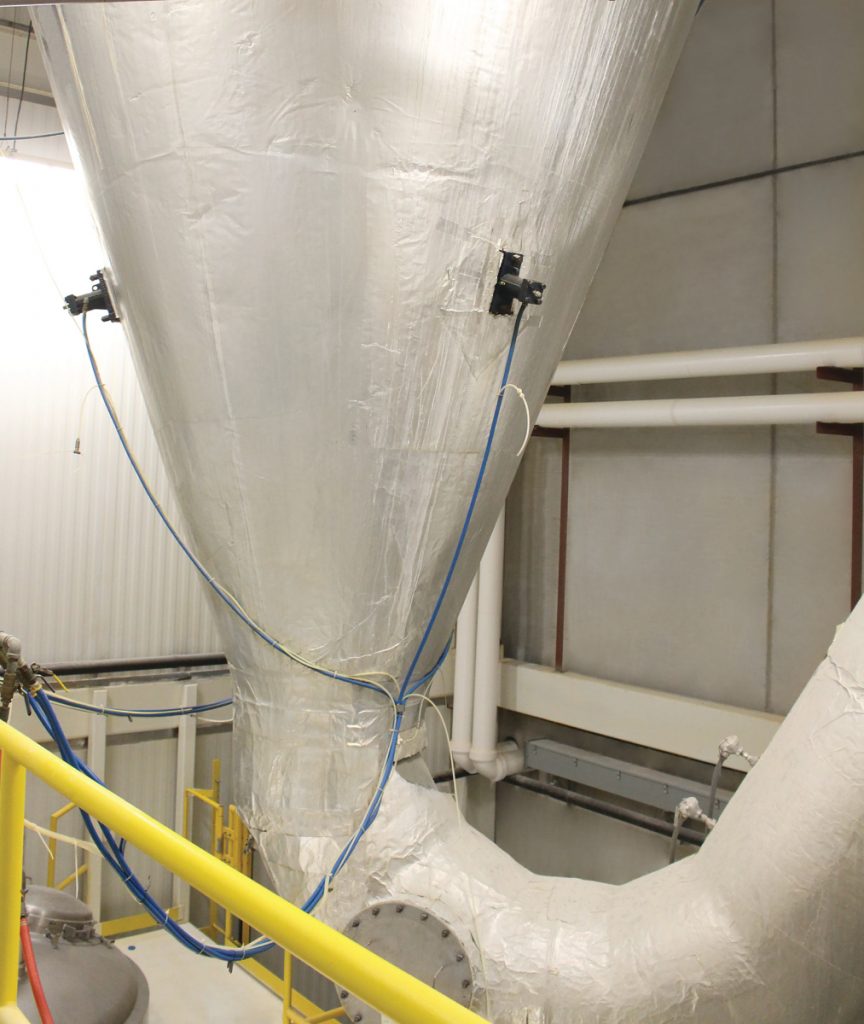 Spray drying is a highly specialized process designed to reduce or completely remove moisture without the use of excessive heat. In short, you can have a liquid reduced to its solid component without risking heat damage. It’s an ideal option for otherwise heat-sensitive products, but it can be used for a wide range of products — most notably in the food and beverage industries.
Spray drying is a highly specialized process designed to reduce or completely remove moisture without the use of excessive heat. In short, you can have a liquid reduced to its solid component without risking heat damage. It’s an ideal option for otherwise heat-sensitive products, but it can be used for a wide range of products — most notably in the food and beverage industries.
In many cases, spray drying is a perfect solution; however, the science behind it is complex. It helps to understand the steps involved so that you can make the best decision. In this post, learn about the spray drying process and how you might benefit from it.
What’s the Process Behind Spray Drying?
Spray drying can be boiled down to three key steps: atomization, drying and recovery.
To start, you supply us with the liquid stock to be dried (or we can create it for you), and we feed it into a rotary atomizer. The process generates small liquid drops. It’s during this phase that we zero in on the target particle size and viscosity.
We then use heated air to dry the resulting powder. Depending on the temperature used, we have the ability to control moisture levels in the end product.
Finally, we collect the powder using a cyclone. Once we pass the powder through a sifter, magnet, and metal detector it’s ready for packaging.
How Does It Compare With Fluidized Bed Processes?
While the two processes are similar, the fluidized bed method results in a full microencapsulation. In other words, each resulting particle is encased in a shell or matrix. That method certainly has its advantages, but spray drying is utilized such that the end product stands alone.
What Are the Advantages of Using Spray Drying?
For starters, spray drying is especially useful when working with liquids that are heat-sensitive. The process relies on highly controlled heating methods to preserve the product’s integrity.
Spray drying is commonly used in the food and beverage industries, where food manufacturers demand specific dry ingredients. It’s also used for pharmaceuticals, extracts and other products. Fortunately, PacMoore has a solid handle on the spray drying process and countless others. We know when it makes the most sense to spray dry, and we’re more than happy to advise you from start to finish.
Why PacMoore Is an Industry Leader in Spray Drying
Spray drying is an intricate process that requires extreme attention to detail. At PacMoore, we’ve been at this a long time, and we’ve got our process down to a literal science. Our team of experts knows the limitations of any given liquid product and can advise the best course of action for you — whether it’s spray drying or any other process.
We’ve built a solid reputation for quality food manufacturing services. Our team works closely with you to ensure perfect alignment at every step.
To learn more about spray drying, or to hear about the other services we offer, contact PacMoore today.
Further Reading: How does the process of spray drying work?
Share this on Facebook, Twitter, LinkedIn, Google Plus, or email to a friend.
Click below to share this on social media:





